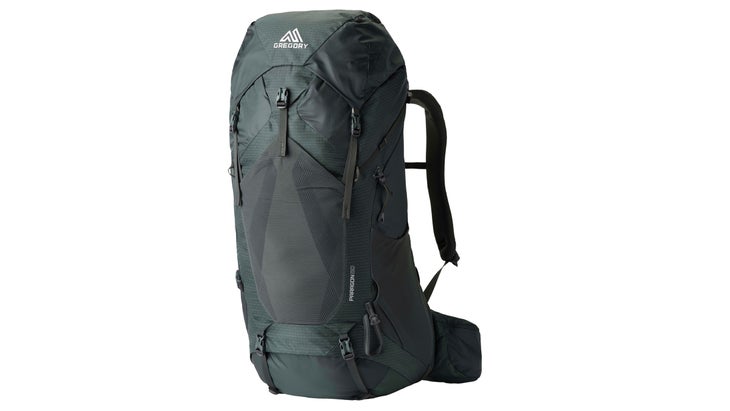Heading out the door? Read this article on the new Outside+ app available now on iOS devices for members! Download the app.
We didn’t think it was possible to improve on the Gregory Paragon 60/Maven 58, an already-stellar pack that we gave an Editor’s Choice award in 2020 for its best-in-test combo of comfort, weight, and organizational features. But the newest version of the pack has proved us wrong. Now, the Paragon/Maven is even more comfortable, more breathable, and more sustainable than before.

Gregory Paragon 60/Maven 58
$270 at REI (Paragon) $270 at REI (Maven)
Weight: 3.5 lbs (M’s S/M), 3.4 lbs (W’s XS/S)
Sizes: M’s (Paragon) S/M – M/L and W’s (Maven) XS/S – S/M
Pros and Cons
⊕ Sway-free carry
⊕ Decent breathability
⊕ 40-percent recycled fabric
⊗ No rain cover
⊗ Not the most durable
Testers loved the seamless wraparound harness, which hugs the hips for hot spot-free carrying. Cushy EVA foam padding and a rubberized coating on the hipbelt mesh helps them stick to the hips, reducing chafing. A steel perimeter frame let us haul up to 40 pounds of mountaineering gear comfortably on Mt. Rainier. We were also impressed with how smoothly it carried: Thanks to the free-floating design, the belt moves independently of the backpanel, making the bag feel as if it’s suspended behind you instead of swaying on rocky terrain. That’s a feature tester Megan Robertson was happy to have on a fourth-class scramble up the Knife’s Edge, a narrow ridge near the summit of Colorado’s Capitol Peak. She was able to load the pack up with a bear canister and tent on the hike up to base camp, then ratchet it flat with the side compression straps for the summit push.
While the 40-percent recycled, 210-denier nylon body fabric was sufficiently durable for an extended bushwhack in Idaho’s Panhandle National Forest, the 330-denier pack bottom didn’t survive a 100-foot butt-scoot down the Knife Edge’s without sustaining a few holes.
The backpanel is a bit of a hybrid between a traditional panel and a trampoline; a tight, springy layer of honeycombed mesh provides plenty of rigidity but also allows for significant airflow. And, thanks to a total lack of foam, we found it didn’t trap heat along our lats and shoulder blades like traditional backpanels do. While it wasn’t quite as breathable as a traditional trampoline, tester Maia Bernstein found it far better than average.
“It breathed well, and I tend to be sensitive to that,” she said. “Descending 5,000 feet on Mt. Rainier in 70-degree weather, I wasn’t totally drenched.” Bernstein added that the blend of decent breathability, good internal capacity, and organizational features made it one of the most versatile packs she used this summer.
As with most Velcro backpanel adjustment systems, this one was a little tricky to manipulate, but it did let us expand the back length by up to three inches. External loops accommodate trekking poles or an ice axe, and a single shoulder-strap pocket fits a Garmin inReach Mini. We liked the full-length side zipper, which made it easy to access the pack’s main compartment during quick layer-up stops, as well as the dorsal shove-it sleeve, which easily fit rain layers. The dual hipbelt pockets each fit snacks and sunscreens but took some finagling to accommodate a bigger smartphone. One ding: Some testers struggled with the side water bottle pockets. While a new forward opening makes them easier to reach without stopping, some folks found them difficult to access when the pack was stuffed full. Others found that, given the lack of a cinch closure, bottles were prone to falling out when they bent over.
Quibbles aside, the materials overhaul, smart feature updates, and significantly enhanced comfort make the latest version of the pack a serious upgrade. So allow us to revise our previous assertion: The former Paragon/Maven could indeed be improved. And while this one still has a few small growth areas, it’s swiftly closing in on perfection.
Looking for more top-tier backpacking packs? Check out our 2025 gear guide.
